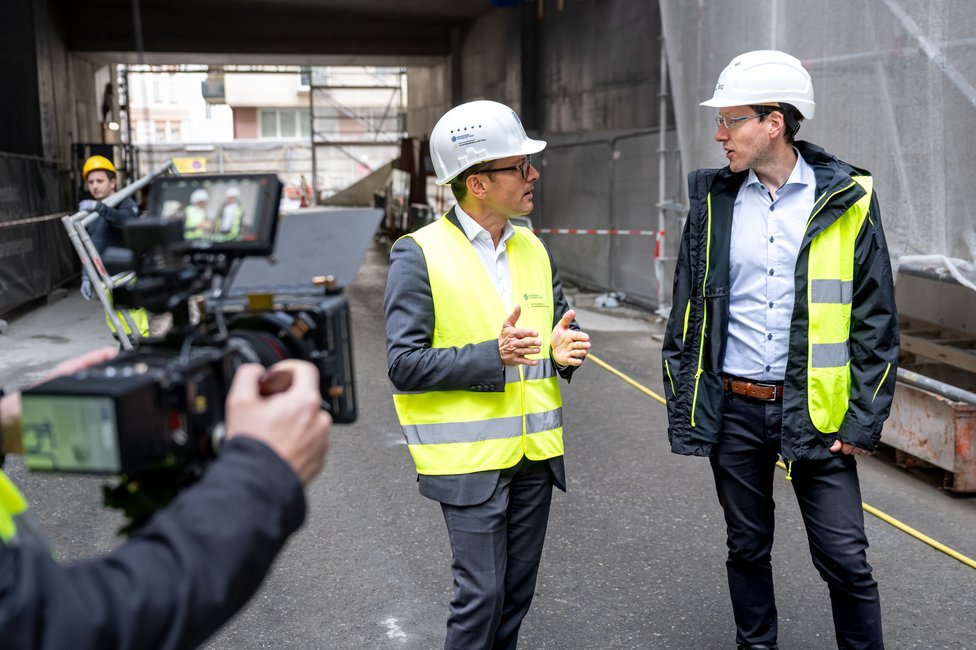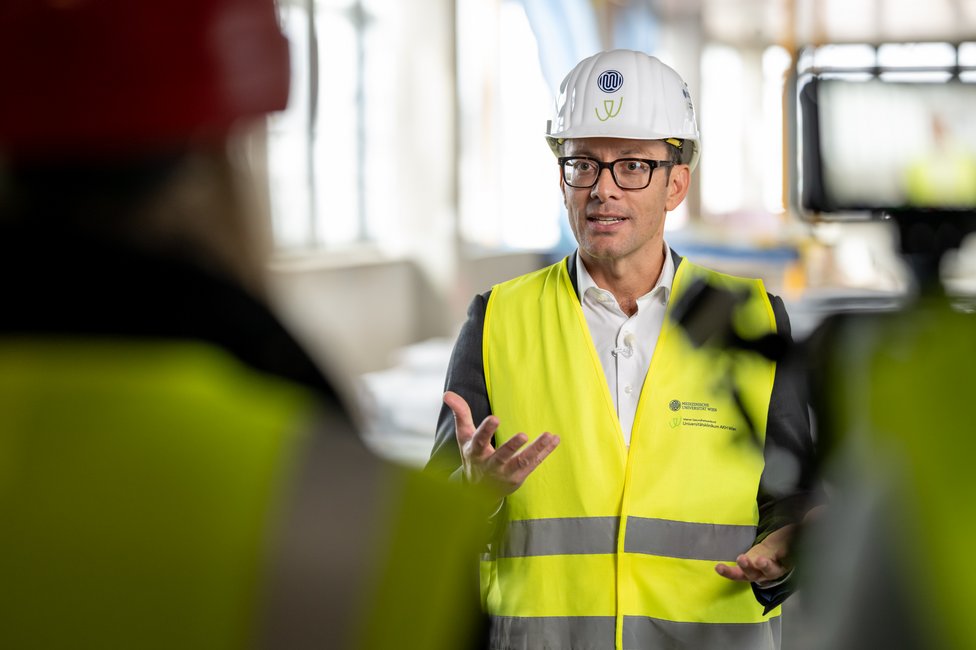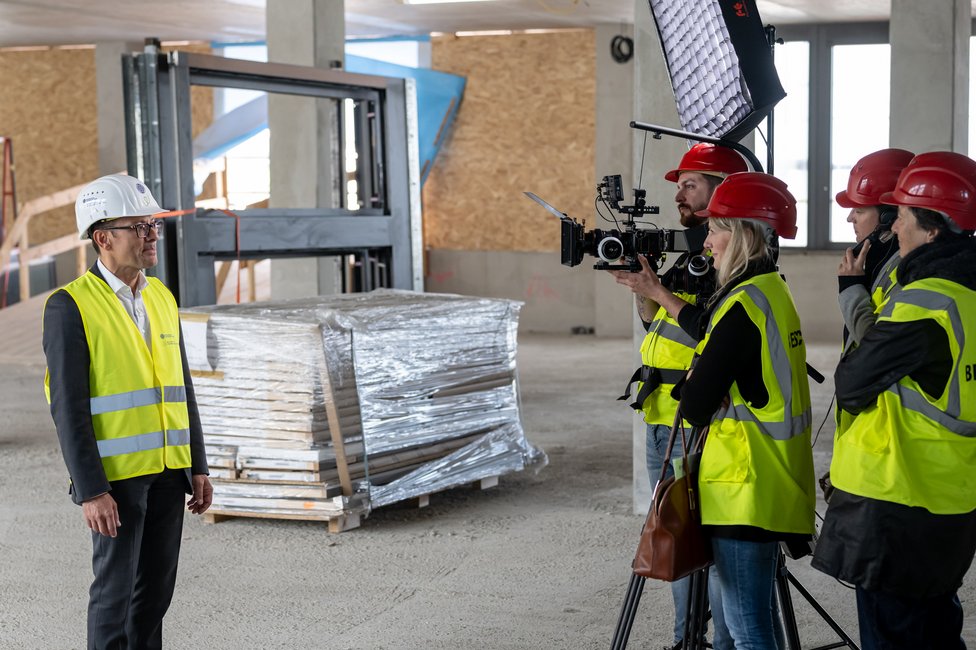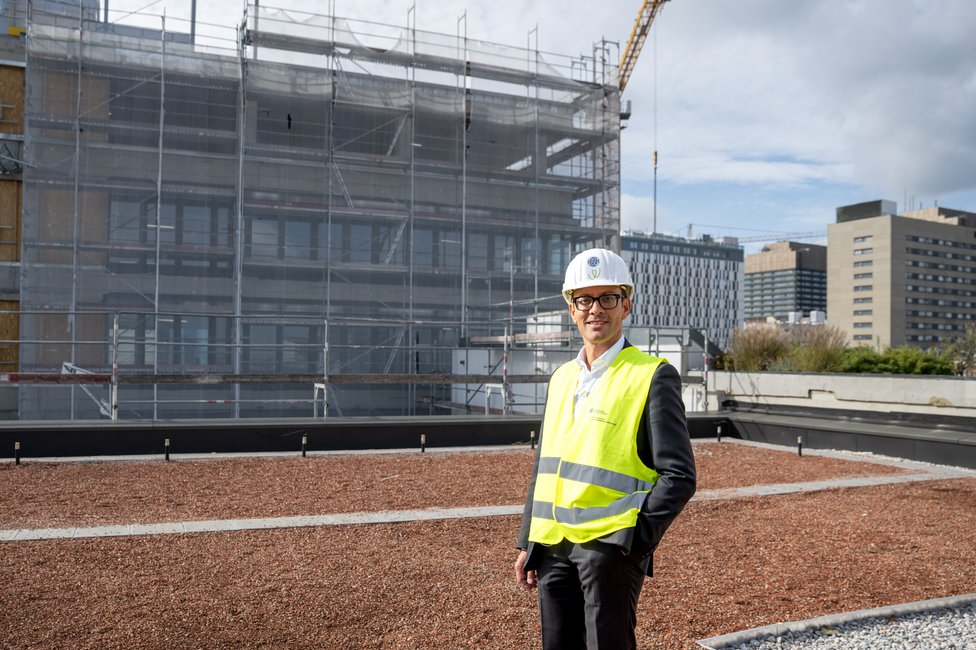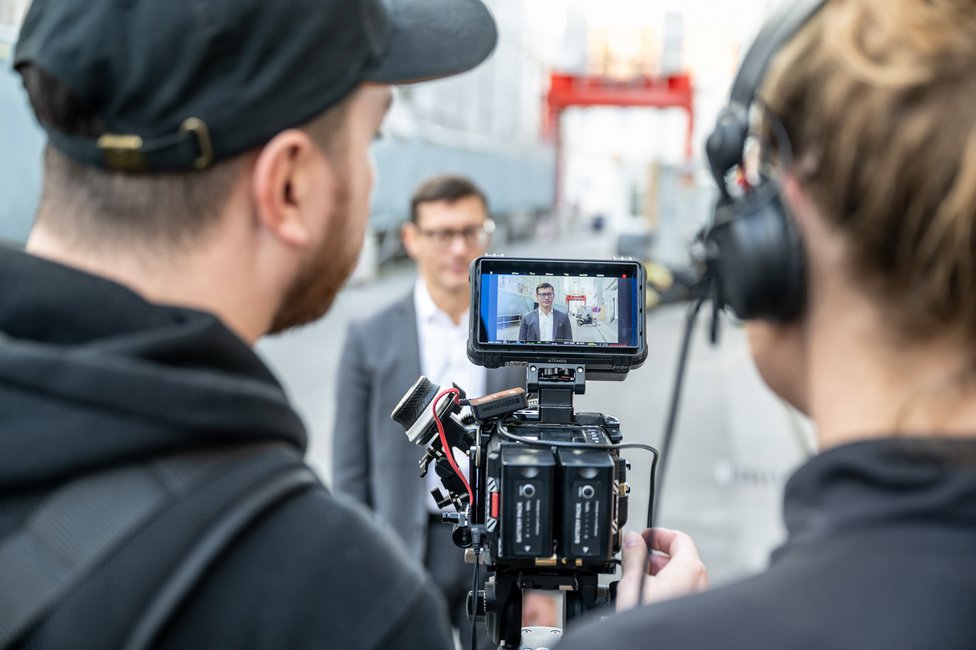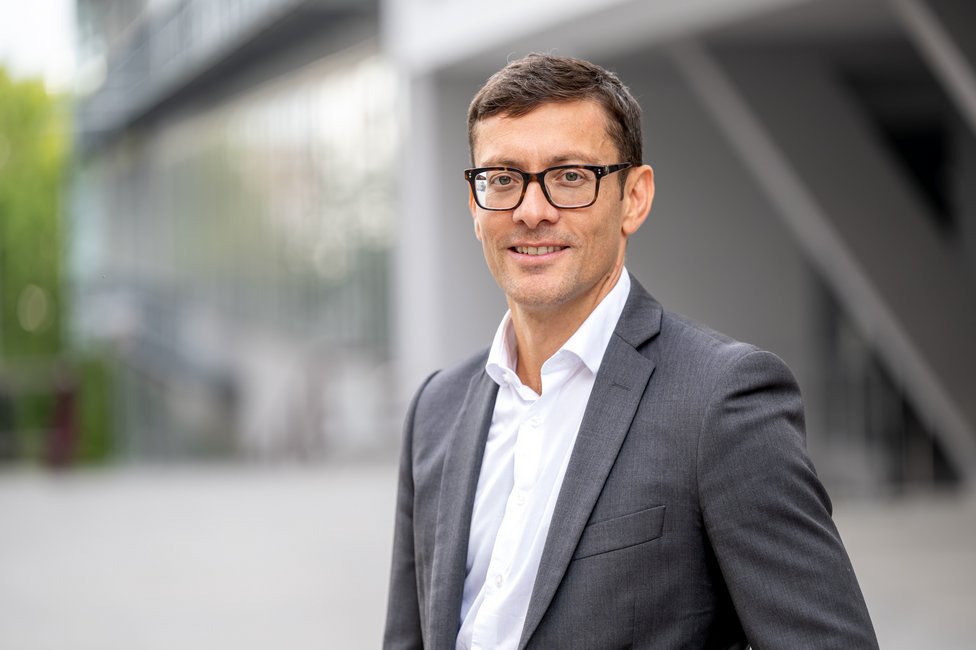A stroll between Mariannengasse and Lazarettgasse shows what investments in infrastructure can achieve: they create space for research, teaching and innovation. And that secures medical progress for generations to come. Vice Rector for Finance Volkan Talazoglu guides us through the construction sites of MedUni Campus Mariannengasse, the Centre for Translational Medicine (CTM) and the Eric Kandel Institute – Centre for Precision Medicine (ZPM) and explains how much future potential can be found in concrete, glass and planning.
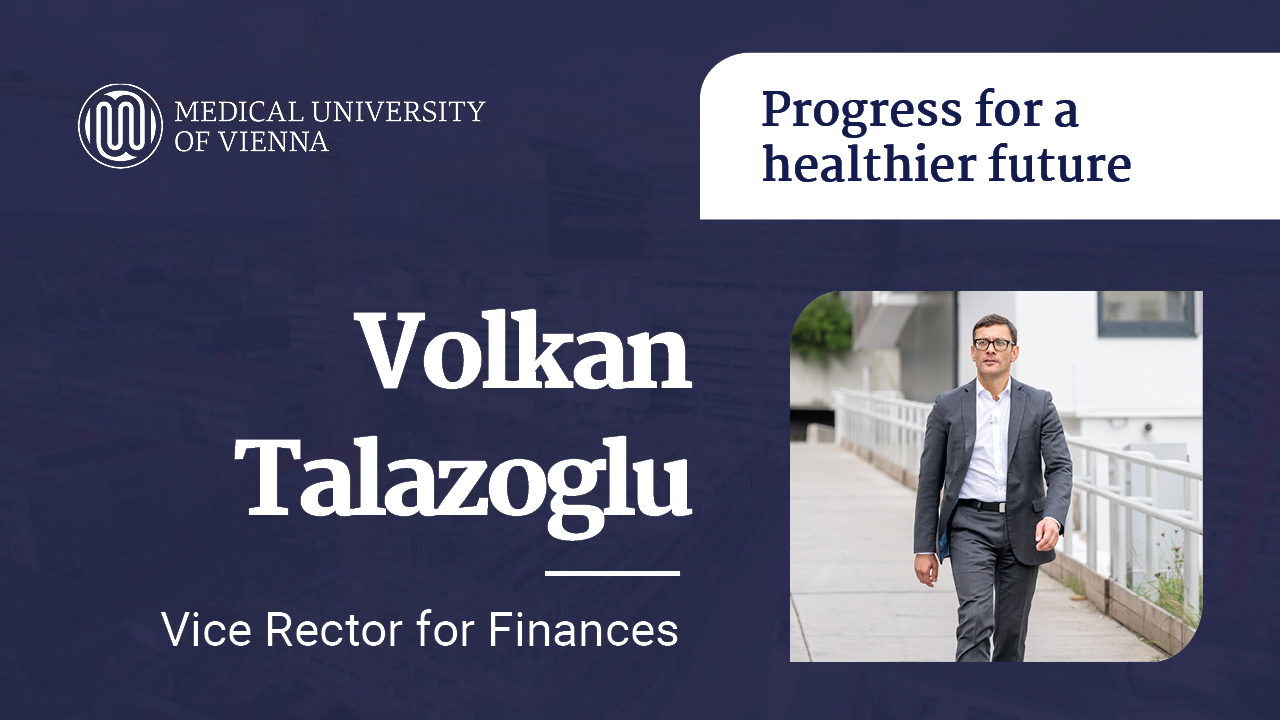
After activation, data will be sent to YouTube. Further information here: Data protection
A total of around €850 million will be invested over the ten years from the start of construction to the completion of all three buildings. This includes around €120 million for equipment and state-of-the-art devices for research, teaching and training. "We will then have 55,000 square metres of floor space, divided between the MedUni Campus Mariannengasse, CTM and ZPM locations. Such a huge project can only be financed with federal funds. It is not financially viable for a university to do this on its own," says Volkan Talazoglu, Vice Rector for Finance at MedUni Vienna. But the investment will pay off. MedUni Vienna will train 600 new doctors every year, which is a key contribution to patient care.
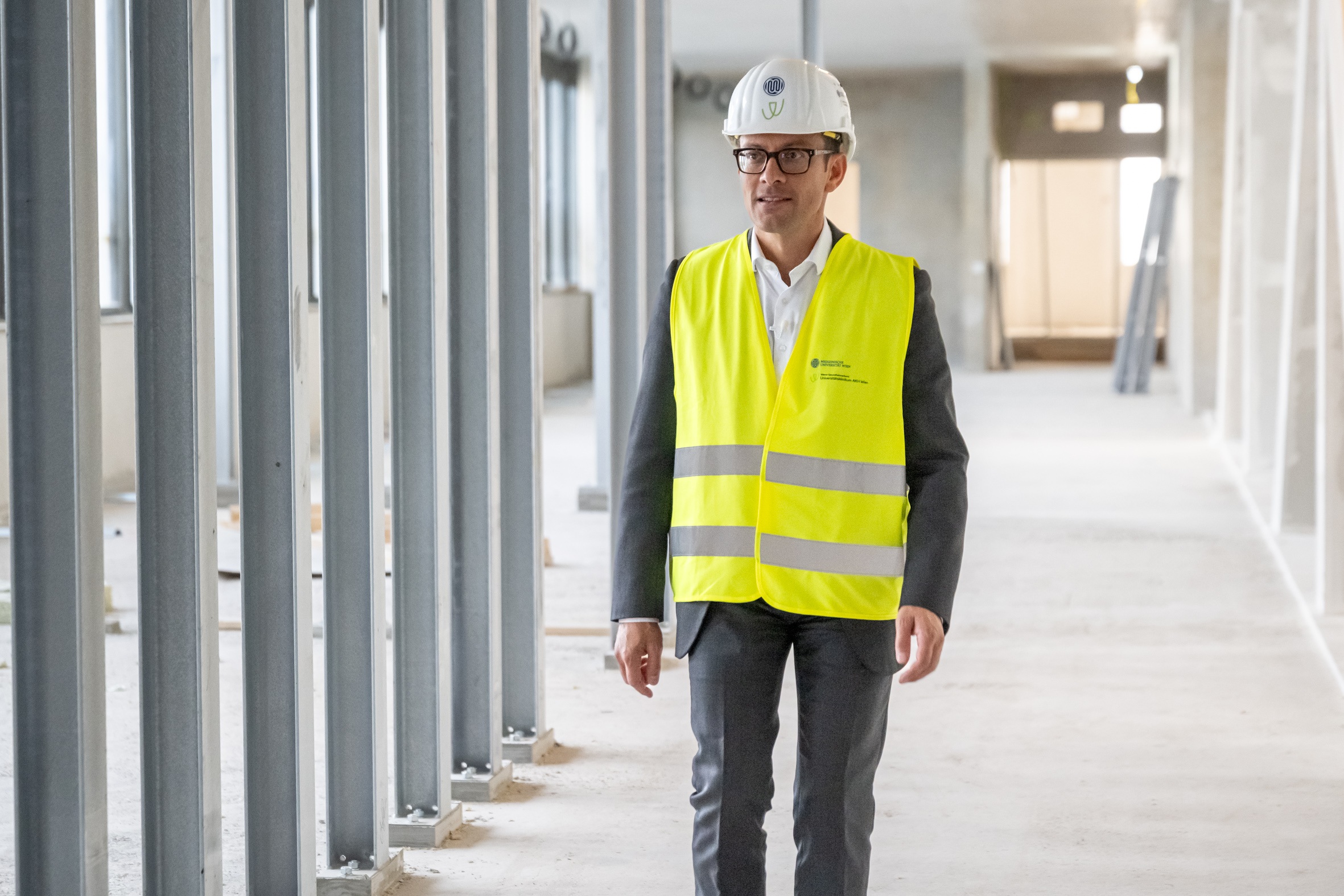
‘We were really lucky to be able to acquire this plot of land near the MedUni Campus AKH,’ says Talazoglu, looking back on the beginnings of the MedUni Campus Mariannengasse almost 14 years ago. In 2012, the then Rectorate seized the opportunity and purchased the site from Wien Energie. This marked the beginning of a project that will permanently change Vienna's medical landscape.
‘Currently, MedUni Vienna's centres are still located at different sites. We are bringing them together here at the MedUni Campus Mariannengasse.’ Talazoglu particularly emphasises: ‘This will enable us to establish close proximity between basic research, teaching and, ultimately, clinical application.’ This spatial concentration is intended to accelerate the transfer of knowledge from research to the bedside and back again – and it also brings efficiency gains: ‘What used to have to be purchased individually for each centre can now be shared by the various centres at one location,’ says Talazoglu. This increases the effectiveness of the use of funds and the efficiency of resource utilisation. A win-win situation for science and the budget.
The campus will become a central location: ‘All clinical teaching will then take place at the MedUni Campus Mariannengasse. Two floors are planned for this purpose. With three large lecture halls, seminar rooms and laboratory space, a modern learning and research facility will be created. The entire life of the students at the clinic will take place here. In terms of teaching, the short-term study programme will take place here – the students will spend their first years here.’
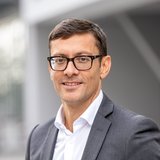
‘What I'm most looking forward to is finally being able to fill the building with life.’
Environmental responsibility also plays a key role for Volkan Talazoglu. ‘We also considered sustainability during the construction phase. Among other things, we installed the district cooling centre for cooling the buildings in a neighbouring building.’ And with a photovoltaic system on the roof, the campus is operated in an energy-efficient manner: ‘This will enable us to secure up to 10 per cent of our energy and electricity supply through photovoltaics.’
What is being created around MedUni Vienna is much more than a construction project. ‘With the three buildings and the focus on research and precision medicine, we are reshaping the future of medicine here at MedUni Vienna.’
